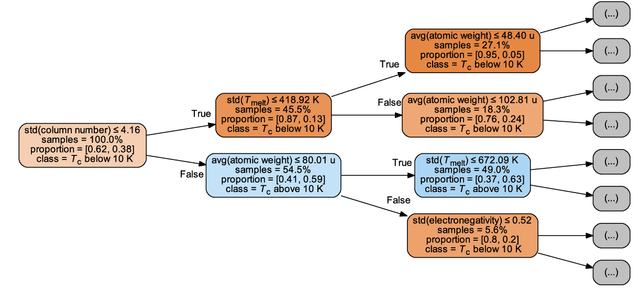Machine learning modeling of superconducting critical temperature
Paper and Code
Oct 06, 2017



Superconductivity has been the focus of enormous research effort since its discovery more than a century ago. Yet, some features of this unique phenomenon remain poorly understood; prime among these is the connection between superconductivity and chemical/structural properties of materials. To bridge the gap, several machine learning schemes are developed herein to model the critical temperatures ($T_{\mathrm{c}}$) of the 12,000+ known superconductors available via the SuperCon database. Materials are first divided into two classes based on their $T_{\mathrm{c}}$ values, above and below 10 K, and a classification model predicting this label is trained. The model uses coarse-grained features based only on the chemical compositions. It shows strong predictive power, with out-of-sample accuracy of about 92%. Separate regression models are developed to predict the values of $T_{\mathrm{c}}$ for cuprate, iron-based, and "low-$T_{\mathrm{c}}$" compounds. These models also demonstrate good performance, with learned predictors offering potential insights into the mechanisms behind superconductivity in different families of materials. To improve the accuracy and interpretability of these models, new features are incorporated using materials data from the AFLOW Online Repositories. Finally, the classification and regression models are combined into a single integrated pipeline and employed to search the entire Inorganic Crystallographic Structure Database (ICSD) for potential new superconductors. We identify more than 30 non-cuprate and non-iron-based oxides as candidate materials.
 Add to Chrome
Add to Chrome Add to Firefox
Add to Firefox Add to Edge
Add to Edge